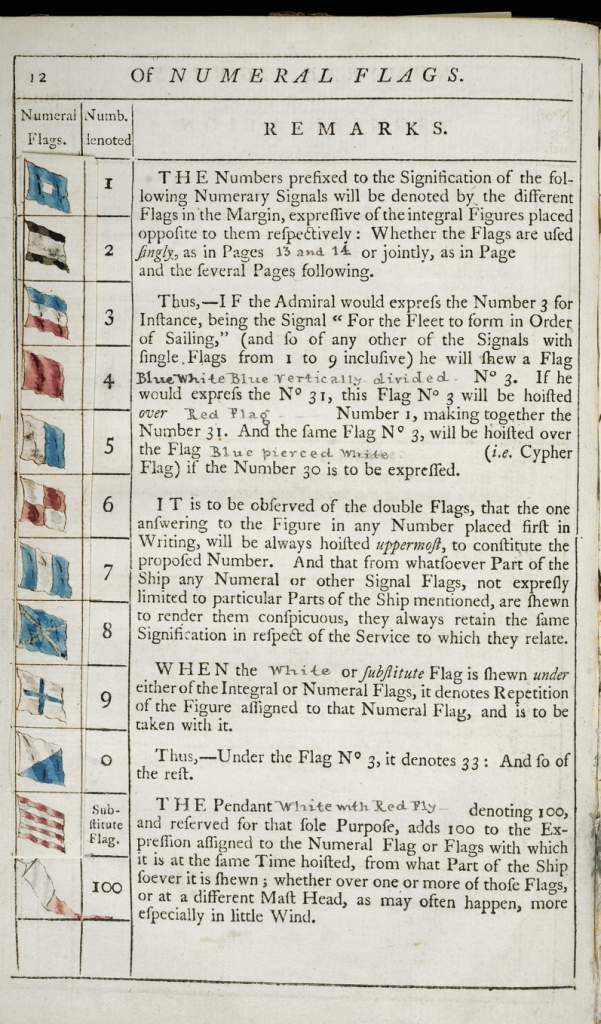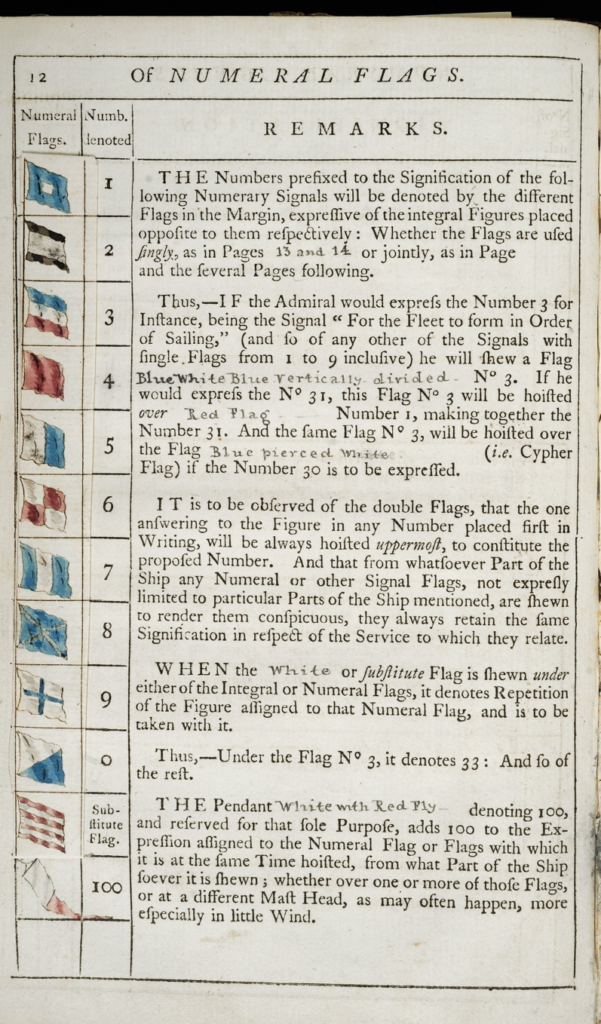Learning Goal
During the American Revolution, eighteenth century technology limited communication between ships at sea. To send messages during the day, ships used signal flags. This lesson combines the history of naval communications during the war with the practice of fundamental mathematics, specifically addition, subtraction, multiplication and division within 100.
Historical Context 
During the eighteenth century, communications between ships at sea was limited. Radios and cellphones did not exist. Naval officers had to develop ways to visually communicate at sea. The use of signal flags helped solve this issue. They were encoded by their position within a ship’s rigging and by their color and design.
By the time of the American Revolution, the British Navy under Lord Howe had developed a numeral flag system. Each flag denoted a number (1-10 and 100) and there was a substitute flag in the event a numeral flag was already in use. To represent two-digit numbers, the first digit (the tens column) would be represented by the appropriate numeral flag, with the second digit (the ones column) was displayed below it. When representing a number where the numeral is repeated, such as 22, the first digit would be represented by the “2” numeral flag and the second digit would be represented by the substitute flag (which referred to the number of the flag immediately above it).
When representing a number above 100, the numeral flag for “100” would be flown above the other two flags. According to the manual, Signal book for the ships of war: day and fog, the numbers displayed could indicate a variety of observations including the number of “strange Ships seen, Depth of Water in Fathoms, &c.___.”
Lesson
Have students examine the eighteenth century signal flag chart. Using this chart, construct addition, subtraction, multiplication and division problems for the class using the numeral flags from the trunk to display in the front of the class. Have students break into groups and create their own math problems to solve using the chart and flags.
Further Discussion
Have students think about the advantages and disadvantages of using a signal flag system. Are there instances and circumstances at sea where a signal flag system would not work? Compare and contrast the reliability of signal flags as a communication system with the use of cellphones and digital communication today.
